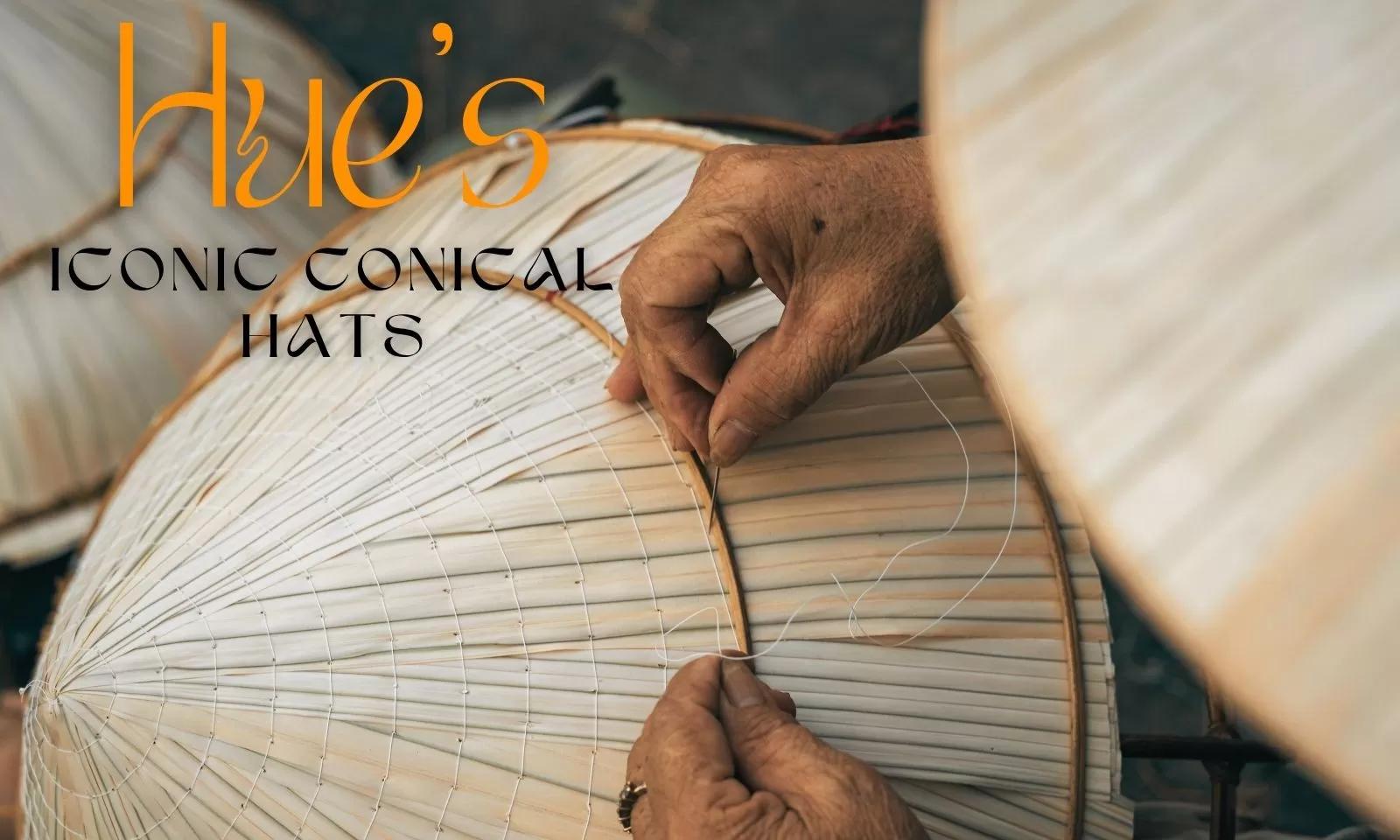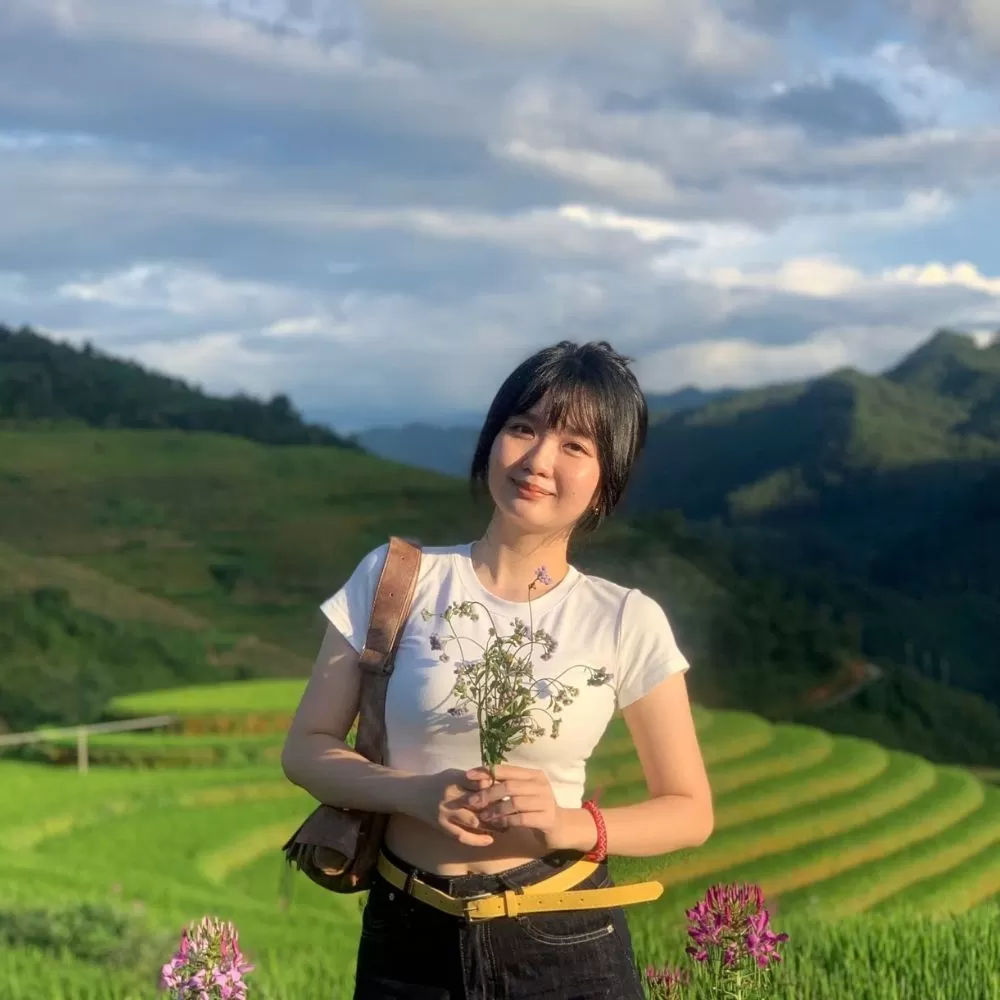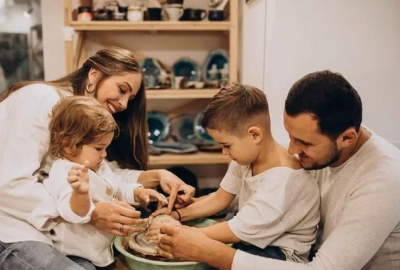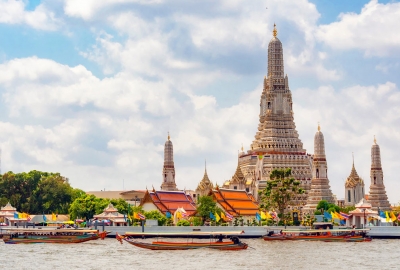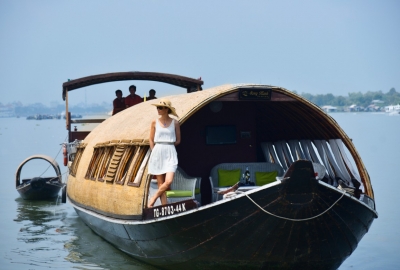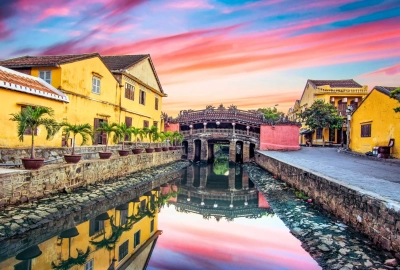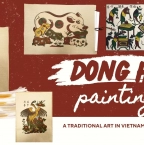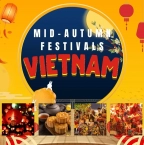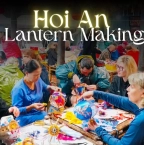
The Hue conical hat (cone-shaped hat) stands as a graceful symbol of Vietnam’s ancient capital — not only as a traditional accessory but also as a cultural artifact steeped in elegance, history and local creativity. Seen everywhere from city streets to poetry and paintings, the conical hat remains an iconic image of Hue.
In this article, we’ll take you through the origin and cultural value of the Hue conical hat, explore how artisans craft these delicate works of art and introduce the creative innovations that continue to preserve and modernize this tradition. Let’s dive into the timeless charm that makes the Hue conical hat so special.
Table of Contents
Hue conical hat: A cultural icon of the Imperial City

The nón lá is a familiar image across Vietnam, but the Hue conical hat has been elevated by the creativity of local artisans to become a symbol of grace and refinement. Often paired with the flowing áo dài, this traditional hat is inseparable from the identity of Hue, particularly in its most poetic form: the nón bài thơ, or “poem hat.”
Its popularity is closely linked to Hue’s natural environment. The harsh summer sun and seasonal monsoon rains made conical hats a necessity, especially for women. “I saw women of all ages wearing nón lá everywhere and it fascinated me,” shared photographer Vo Huong Lan, who spent years capturing this symbol through her lens.
A legacy preserved through generations
Hue’s conical hat tradition dates back hundreds of years and once, nearly every village in the region had artisans skilled in hat-making. Today, about 15 traditional conical hat villages in Hue continue the legacy, including Phu Cam, My Lam and Doc So — all of which were important suppliers of hats during the Nguyen Dynasty (1802–1945).
Many artisans are born into the craft. “I’ve been making nón lá since I was 13 and I will continue as long as my health allows,” said 75-year-old Vo Thi Toan from An Luu village. “It’s not hard work, but it requires great patience.” In the past, nearly every young woman in Hue knew how to make a hat and this skill was often passed down from mother to daughter. This enduring tradition is kept alive not only by memory but through the skilled hands of artisans who continue to make each conical hat with care and precision.
To truly experience the soul of Hue, make time to visit its most iconic traditional craft villages.
How Hue conical hats are made: 3 key steps
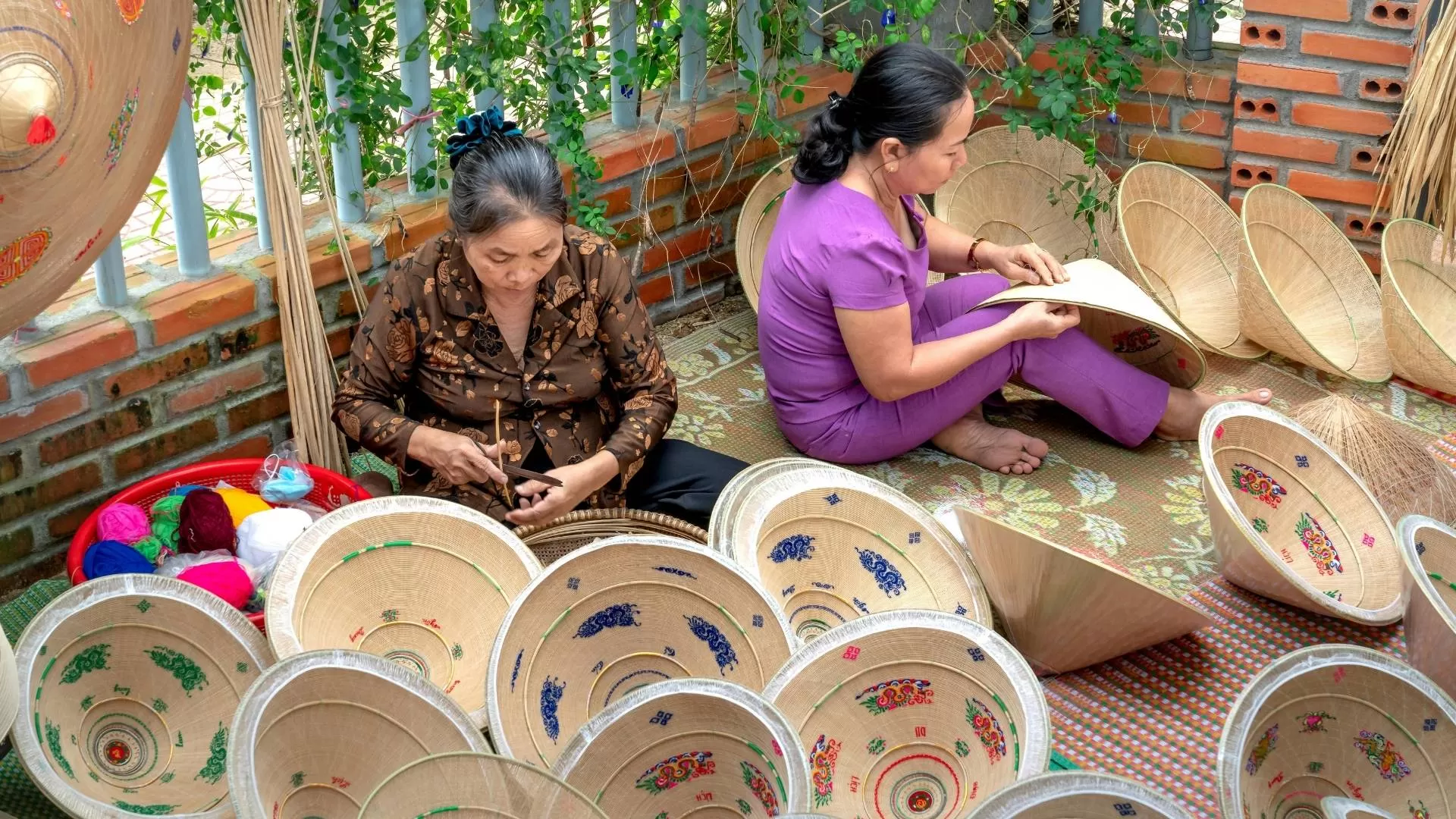
Each Hue conical hat is the result of careful craftsmanship and generations of tradition. From selecting natural materials to shaping and sewing, every step requires skill and precision. Let’s take a closer look at how these iconic hats come to life through three essential stages.
Creating the frame and rims
The structure is crafted using 12 beveled wooden slats, tightly bound at the top and spread out evenly to form the cone. A durable brim is made from the trunk of a large tree, cut and shaped into a perfect circle to complete the frame.
Handling the conical leaves
Palm leaves (latanier leaves) are gathered from forests, sorted for quality and sun-dried or lightly smoked to achieve the right color and flexibility. For special hats like the poem hat, artisans place poems or symbolic images between two layers of leaf — visible only when held against the light.
Sewing the hat
Sewing begins at the peak and continues down to the brim, with each stitch spaced about 1 cm apart. The final rim is stitched with white thread at 2 cm intervals. This precision ensures the hat’s durability while maintaining its elegant appearance.
While these steps preserve the traditional technique, modern artisans in Hue have also introduced creative variations that blend heritage with artistry.
Want to uncover more of Hue’s charm? Dive deeper into its culture, cuisine and traditions through our curated blog posts below: >>> Explore Hue with family: 9 best things to do >>> Top 11 must-try traditional dishes in Hue >>> Top 10 must-visit attractions in Hue >>> Exploring Hue in 2-3 days: Must-visit attractions and travel tips |
Creative variations: Innovation within tradition
While the classic Hue conical hat remains timeless, local artisans have continuously reimagined its form, giving rise to a wide range of artistic and innovative adaptations. These creative versions preserve traditional techniques while embracing modern aesthetics and cultural expression.
Poem hats (Nón bài thơ)
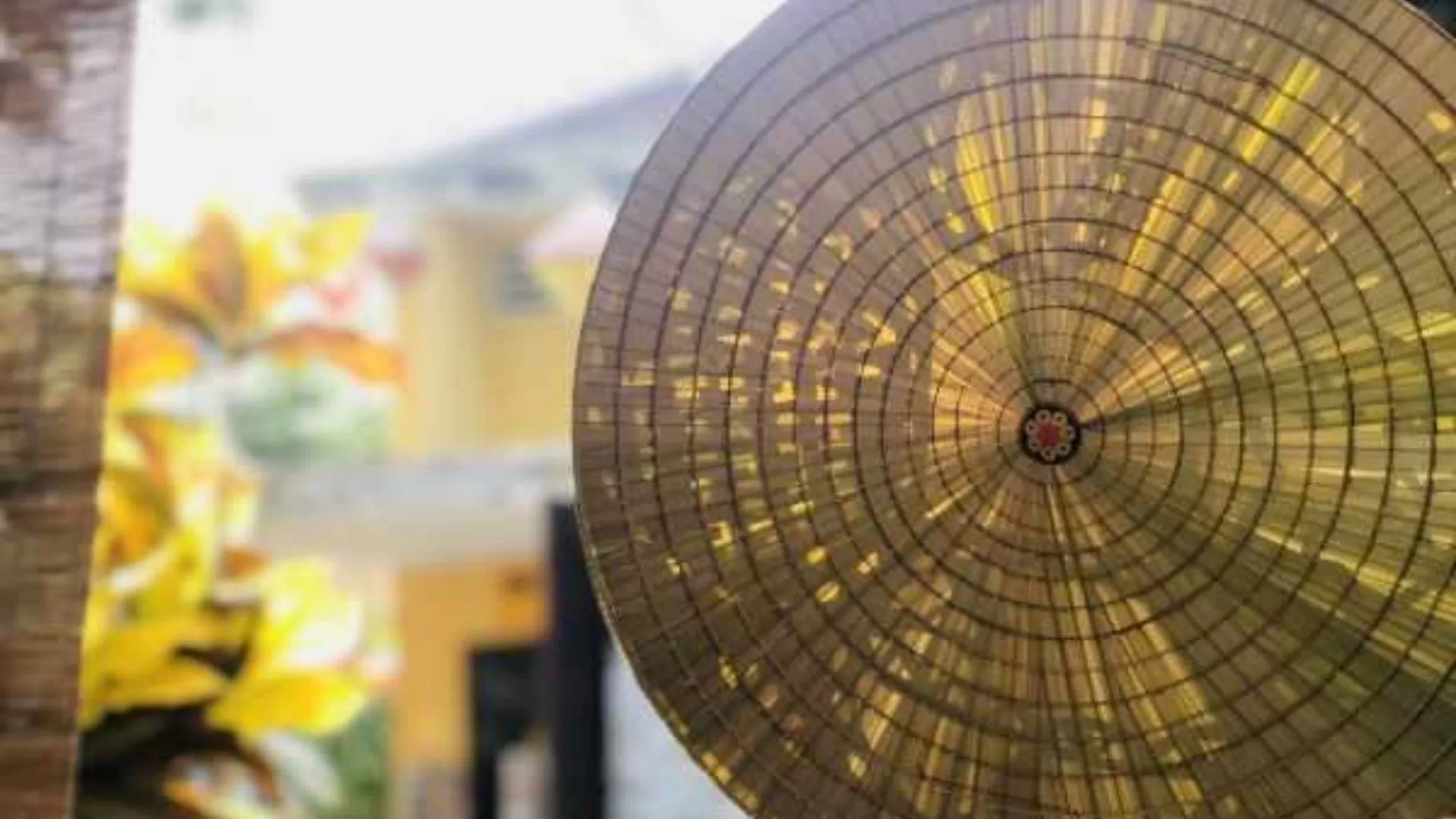
The most iconic variation, these poetic hats originated in Tay Ho village in the 1960s. Between the layers of palm leaves, artisans embed hand-written poems, sketches of girls in áo dài, or silhouettes of Huế’s scenery. When held up to sunlight, the hidden imagery is revealed — a romantic, almost magical effect that has captivated generations.
Embroidered hats
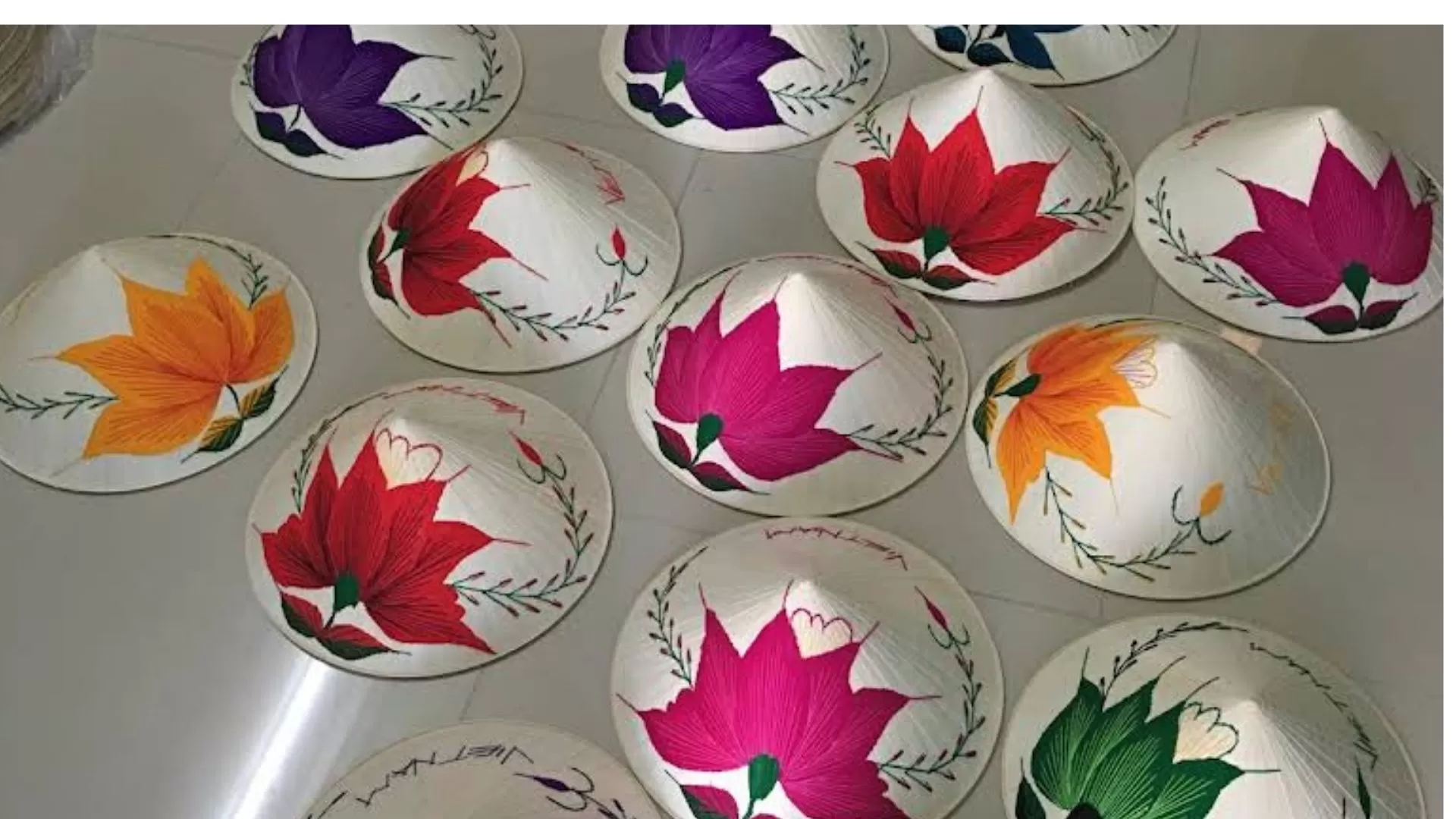
Adding texture and visual storytelling, these hats are embroidered with symbols of Hue’s heritage, such as the Thien Mu Pagoda, Truong Tien Bridge, or graceful lotus flowers. The embroidery is carefully stitched onto the leaf surface, blending tradition with fine artistry and enhancing the hat’s decorative appeal.
Trúc Chỉ hats
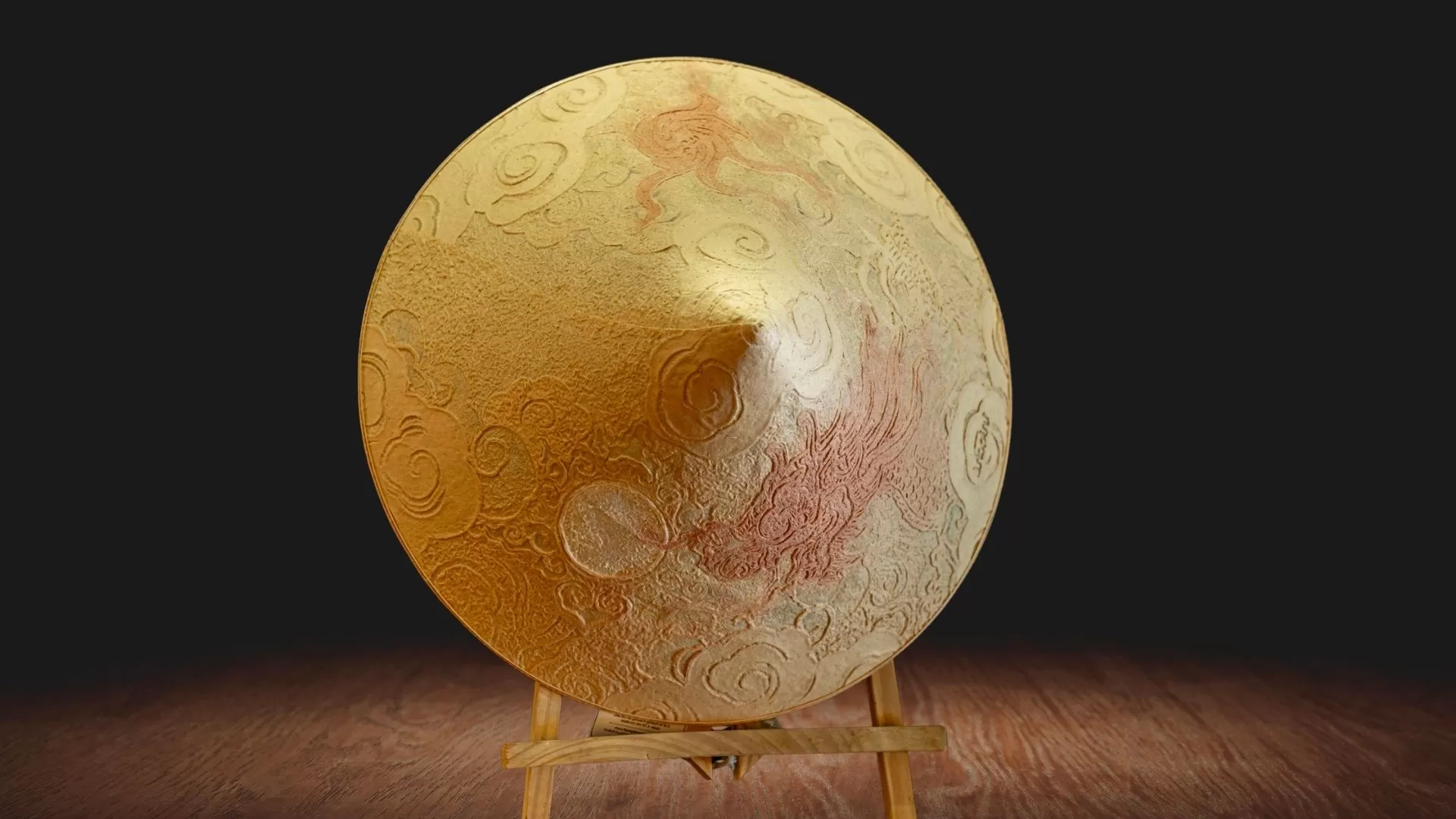
Introduced in 2013, Trúc Chỉ hats are made using handcrafted bamboo-fiber paper instead of traditional palm leaves. These hats feature intricate motifs pressed into the paper, which glow beautifully under sunlight. Though not suitable for wet weather, they are prized as artistic, collectible pieces that reflect Hue’s creative spirit.
Lotus leaf hats
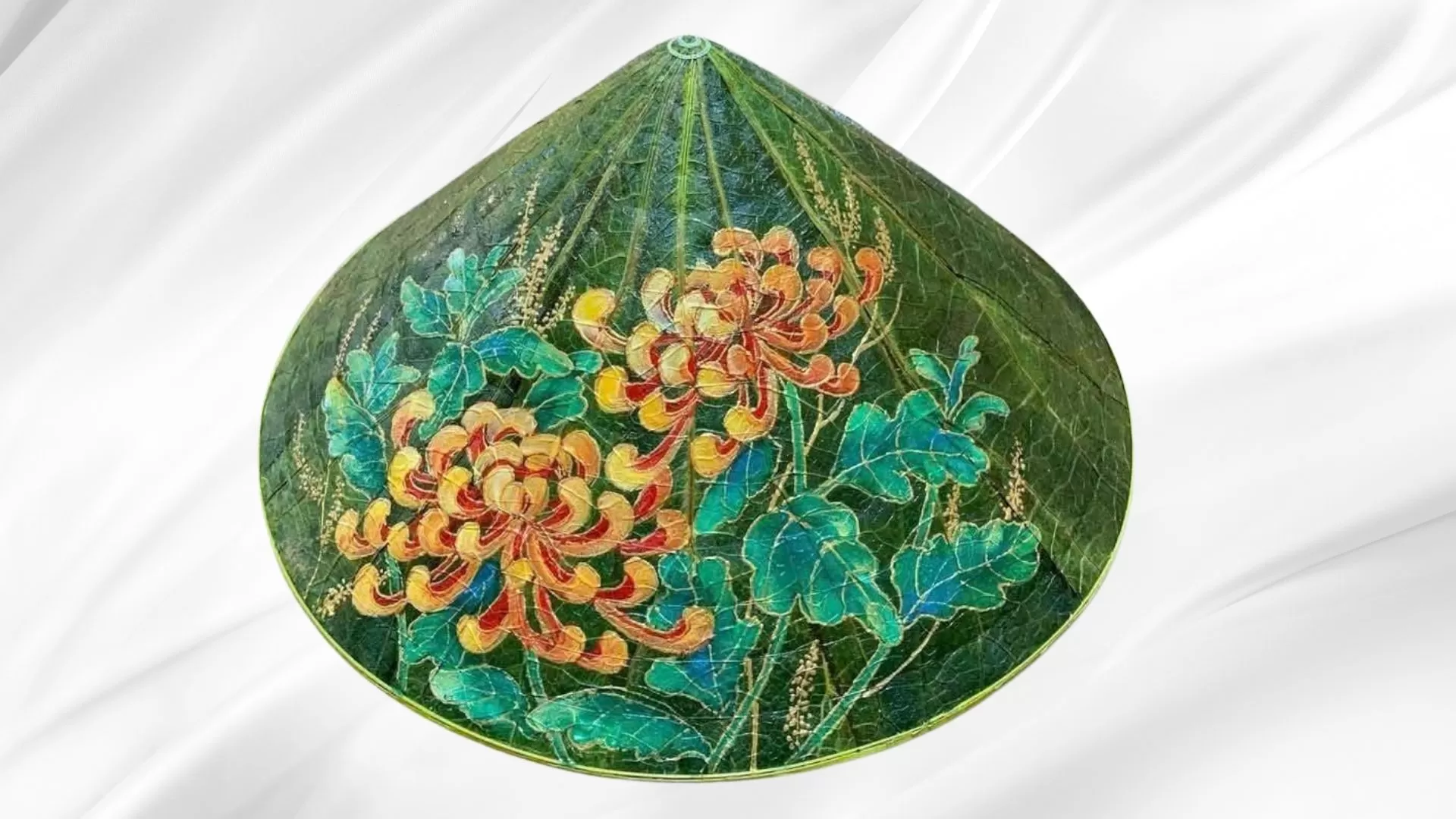
Crafted by artist Nguyễn Thanh Thảo, this modern variation involves pressing real lotus leaves onto the hat’s surface, giving it a soft olive hue and natural texture. The result is a rustic, eco-friendly version of the nón lá that has gained popularity among younger audiences and those seeking sustainable fashion.
Through these variations, Hue conical hat Vietnam remains a living tradition — one that evolves with time while honoring the artistry, poetry and identity of Vietnam’s former royal capital.
Ready to experience the timeless beauty of Hue for yourself? Explore our handpicked tours that take you through the heart of Vietnam — including unforgettable stops in the Imperial City.
In addition to our pre-designed tours, we can tailor-make trips that perfectly suit your needs. Don't wait any longer - get in touch with us now to plan an unforgettable journey with the best services just for you! |
Hue’s iconic conical hat villages: A journey into craftsmanship
Once, almost every village in Hue had at least one skilled conical hat maker. From mothers teaching daughters to whole families involved in production, the craft was not just a livelihood but a shared heritage. Though fewer in number today, around 15 Hue conical hat villages continue to preserve and enrich this time-honored tradition. Among them, three villages stand out for their skill, legacy and enduring connection to the royal past.
Phu Cam Village
Phu Cam is one of the most historically significant villages for Hue conical hat production. Located near the city center, it was once the primary supplier of hats for the Nguyen royal court. Artisans here are known for their attention to proportion and the perfect dome shape of the hat. Today, Phu Cam remains a vibrant center of craftsmanship where visitors can witness the hat-making process and meet families who have preserved the trade for generations.
My Lam Village
Nestled in a peaceful rural setting, My Lam village is celebrated for the delicate aesthetic of its hats. The villagers are especially skilled in producing poem hats (nón bài thơ) that feature handwritten verses and symbolic imagery embedded between layers of palm leaves. My Lam hats are known for their balance of elegance and strength, often featuring smoother finishes and subtle decorative accents that showcase the village's refined artistry.
Doc So Village
Doc So, located just a few kilometers from Hue’s urban area, is another important hub of conical hat villages in Hue. The village has long specialized in sourcing and preparing high-quality palm leaves used in hat-making. Artisans here are deeply involved in the early stages of the process, such as leaf drying, smoking and quality control. Doc So is also home to innovative artists who have introduced modern touches, like lotus-leaf overlays and embroidered motifs, while preserving traditional techniques.
These villages aren’t just places of production — they are living museums of Hue’s craftsmanship and creativity, waiting to be explored by curious travelers.
From the skill of village artisans to the evolving creativity of local artists, the Hue conical hat continues to symbolize the soul of Hue — elegant, poetic and deeply human. Every stitch and silhouette tells a story of heritage and pride.
Want to witness Hue’s traditional craftsmanship up close? Let Hanoi Voyages help you plan a journey that brings you face-to-face with artisans, cultural icons and unforgettable experiences in the heart of Vietnam.
Dream about your trip to Asia, in private
We are here to make it happen with youFREE QUOTE, WITHOUT OBLIGATION

